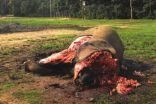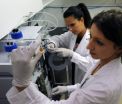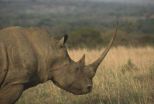(Press-News.org) Birds that hoard food for a rainy day better be sure that there are no great tits around to spy on where they hide their reserve of seeds and nuts. So says Anders Brodin and Utku Urhan of the University of Lund in Sweden, who found that great tits can remember the position of such hideaways up to 24 hours after seeing it cached. Interestingly, even though great tits share this mental ability with well-known hoarders such as crows and jays, they do not store up food themselves. The findings appear in Springer's journal Behavioral Ecology and Sociobiology.
Observations were conducted in a laboratory especially designed for bird experiments. Caged great tits (Parus major) were first allowed to observe where marsh tits (Poecile palustris) stored away sunflower seeds. After a retention interval of either one or 24 hours, the birds were then allowed to go in search of these caches. The great tits did this most accurately after one hour, while they were just slightly less accurate in memorizing the hideaways after 24 hours.
In nature it is very useful to be able to observe others' cache and to memorize its location so that it can be recovered at a later stage. This elaborate strategy requires memory storage over an extended time. This skill has previously only been demonstrated in some species of corvids, such as the Mexican jay and Clark's nutcracker. The current Swedish study is the first to show that members of the Paridae family, which include tits, chickadees and titmice, have the same observational spatial learning and memorizing ability.
Brodin and Urhan write that they are not surprised that great tits have the cognitive capacity to do observational learning, given their innovative feeding behavior in general. Previous research has shown that they could observe and learn complex foraging behavior not only from other birds of the same species but also from blue and marsh tits.
What Brodin and Urhan did find surprising is that this species is not itself a food hoarder, and may therefore not have the special memory adaptations in the brain that is possessed by specialized food hoarders. They believe that an observing pilferer uses different memorizing techniques than hoarders, and has some understanding of allocentric space that allows them to understand the position of the cache even if it is not in direct view.
"The ability of observational memorization could be more important for non-hoarders than for hoarders, as this could increase their chances of survival especially when foraging conditions are bad," says Brodin. "For example, after a blizzard, the access to stored food may be the difference between life and death."
INFORMATION:
Reference:
Brodin, A. & Urhan, A.U. (2014). Interspecific observational memory in a non-caching Parus species, the great tit Parus major, Behavioral Ecology and Sociobiology. DOI 10.1007/s00265-013-1679-2
The full-text article is available to journalists on request.
"You hide it -- I'll find it!" -- Great tit has a bird's eye view when looking for dinner
Parus major can remember other birds' food hideaways for up to 24 hours, Swedish study shows
2014-02-12
ELSE PRESS RELEASES FROM THIS DATE:
New data shows continued decline of African forest elephants
2014-02-12
London (February 12, 2014)—New data from the field in Central Africa shows that between 2002 and 2013, 65 percent of forest elephants were killed. They are being poached, for their ivory, at a shocking 9 percent per year.
This new data marks an update to an earlier paper in the online journal PLOS ONE on the status of forest elephants across Central Africa, published by the same scientists. Many organisations collaborated in the study which covered 80 sites, in five countries, over the twelve years of data collection.
The earlier paper, published in 2013, already had ...
Capillaries will measure diffusion and help in more efficient medical treatment
2014-02-12
How strongly do two dissolved analytes react with each other? Such information is of paramount importance not only in chemistry and molecular biology, but also in medicine or pharmacy, where it is used, i.a., to determine optimal drug doses. A method developed in the Institute of Physical Chemistry of the Polish Academy of Sciences in Warsaw will allow for determining diffusion coefficients of analytes in fluids and equilibrium constants of reactions – quickly, at low cost, and most importantly: universally.
In many medical therapies, a prerequisite for efficient treatment ...
Genetic find might lead to cattle that are more resistant to TB
2014-02-12
Scientists have identified genetic traits in cattle that might allow farmers to breed livestock with increased resistance to bovine tuberculosis (TB).
The study, which compared the genetic code of TB-infected animals with that of disease-free cattle, could help to impact on a disease that leads to major economic losses worldwide.
The research, led by the University of Edinburgh's Roslin Institute, has identified a number of genetic signatures associated with TB resistance in the cows that remained unaffected.
The study builds on previous research by The Roslin Institute, ...
Mindfulness meditation may improve decision making
2014-02-12
One 15-minute focused-breathing meditation may help people make smarter choices, according to new research from researchers at INSEAD and The Wharton School. The findings are published in the February issue of Psychological Science, a journal of the Association for Psychological Science.
People have trouble cutting their losses: They hold on to losing stocks too long, they stay in bad relationships, and they continue to eat large restaurant meals even when they're full. This behavior, often described as "throwing good money after bad," is driven by what behavioral scientists ...
Scientists discover a new pathway for fear deep within the brain
2014-02-12
Cold Spring Harbor, NY – Fear is primal. In the wild, it serves as a protective mechanism, allowing animals to avoid predators or other perceived threats. For humans, fear is much more complex. A normal amount keeps us safe from danger. But in extreme cases, like post-traumatic stress disorder (PTSD), too much fear can prevent people from living healthy, productive lives. Researchers are actively working to understand how the brain translates fear into action. Today, scientists at Cold Spring Harbor Laboratory (CSHL) announce the discovery of a new neural circuit in the ...
Poaching threatens savannah ecosystems
2014-02-12
White rhinoceros may be extinct in twenty years with the current poaching rates. The loss of this megaherbivore is in itself a tragedy, but it may also have tremendous effects on the ecosystems they now live in.
The white rhino (Ceratotherium simum), and other megaherbivores, are key drivers of ecosystem functioning because they´re not controlled by predation.
A new study by Joris Cromsigt and Mariska te Beest, published in Journal of Ecology, highlights the role of the white rhino in the savannah ecosystems.
Earlier empirical studies on the ecosystem impact of megaherbivores ...
Exercise targets cellular powerhouses to improve heart function
2014-02-12
Whether lifting weights in a gym or just walking around the block, exercise has many benefits, such as helping people lose weight and build stronger muscles. Some studies suggest that it may reduce the risk of developing cancer and other diseases. Researchers now report in ACS' Journal of Proteome Research that moderate, long-term physical activity appears to improve cardiovascular health in mice by targeting the heart cells' powerhouses — the mitochondria.
Eduard Sabidó, Francisco Amado and colleagues explain that despite the well-documented benefits of exercise, the ...
How stellar death can lead to twin celestial jets
2014-02-12
Astronomers know that while large stars can end their lives as violently cataclysmic supernovae, smaller stars end up as planetary nebulae – colorful, glowing clouds of dust and gas. In recent decades these nebulae, once thought to be mostly spherical, have been observed to often emit powerful, bipolar jets of gas and dust. But how do spherical stars evolve to produce highly aspherical planetary nebulae?
In a theoretical paper published this week in the Monthly Notices of the Royal Astronomical Society, a University of Rochester professor and his undergraduate student ...
GVSU researchers draw link between zebra mussels, risk of algae blooms
2014-02-12
Researchers at Grand Valley State University's Annis Water Resources Institute are learning more about the impact invasive zebra mussels and native aquatic insect larvae have on the risk of algae blooms in two West Michigan lakes. The results of the research will be published in the journal Oikos.
Postdoctoral researcher Geraldine Nogaro and AWRI director Alan Steinman studied the impact that invasive zebra mussels and native chironomid larvae have on nutrient releases in Muskegon Lake and Bear Lake. While studying the mussels, Nogaro and Steinman noted that filter feeding ...
Waste from age-old paper industry becomes new source of solid fuel
2014-02-12
In today's search for renewable energy sources, researchers are turning to the hi-tech, from solar and hydrogen fuel cells, and the very low-tech. The latest example of a low-tech alternative comes from an age-old industry: paper. A new study, appearing in ACS' journal Energy & Fuels, reveals a sustainable way to turn the huge amounts of waste from paper production into solid fuel with the added bonus of diverting the sludge from overflowing landfills.
Chinnathan Areeprasert, Peitao Zhao and colleagues note that making paper, from debarking and chipping wood to the final ...
LAST 30 PRESS RELEASES:
The vast majority of US rivers lack any protections from human activities, new research finds
Ultrasound-responsive in situ antigen "nanocatchers" open a new paradigm for personalized tumor immunotherapy
Environmental “superbugs” in our rivers and soils: new one health review warns of growing antimicrobial resistance crisis
Triple threat in greenhouse farming: how heavy metals, microplastics, and antibiotic resistance genes unite to challenge sustainable food production
Earthworms turn manure into a powerful tool against antibiotic resistance
AI turns water into an early warning network for hidden biological pollutants
Hidden hotspots on “green” plastics: biodegradable and conventional plastics shape very different antibiotic resistance risks in river microbiomes
Engineered biochar enzyme system clears toxic phenolic acids and restores pepper seed germination in continuous cropping soils
Retail therapy fail? Online shopping linked to stress, says study
How well-meaning allies can increase stress for marginalized people
Commercially viable biomanufacturing: designer yeast turns sugar into lucrative chemical 3-HP
Control valve discovered in gut’s plumbing system
George Mason University leads phase 2 clinical trial for pill to help maintain weight loss after GLP-1s
Hop to it: research from Shedd Aquarium tracks conch movement to set new conservation guidance
Weight loss drugs and bariatric surgery improve the body’s fat ‘balance:’ study
The Age of Fishes began with mass death
TB harnesses part of immune defense system to cause infection
Important new source of oxidation in the atmosphere found
A tug-of-war explains a decades-old question about how bacteria swim
Strengthened immune defense against cancer
Engineering the development of the pancreas
The Journal of Nuclear Medicine ahead-of-print tip sheet: Jan. 9, 2026
Mount Sinai researchers help create largest immune cell atlas of bone marrow in multiple myeloma patients
Why it is so hard to get started on an unpleasant task: Scientists identify a “motivation brake”
Body composition changes after bariatric surgery or treatment with GLP-1 receptor agonists
Targeted regulation of abortion providers laws and pregnancies conceived through fertility treatment
Press registration is now open for the 2026 ACMG Annual Clinical Genetics Meeting
Understanding sex-based differences and the role of bone morphogenetic protein signaling in Alzheimer’s disease
Breakthrough in thin-film electrolytes pushes solid oxide fuel cells forward
Clues from the past reveal the West Antarctic Ice Sheet’s vulnerability to warming
[Press-News.org] "You hide it -- I'll find it!" -- Great tit has a bird's eye view when looking for dinnerParus major can remember other birds' food hideaways for up to 24 hours, Swedish study shows




